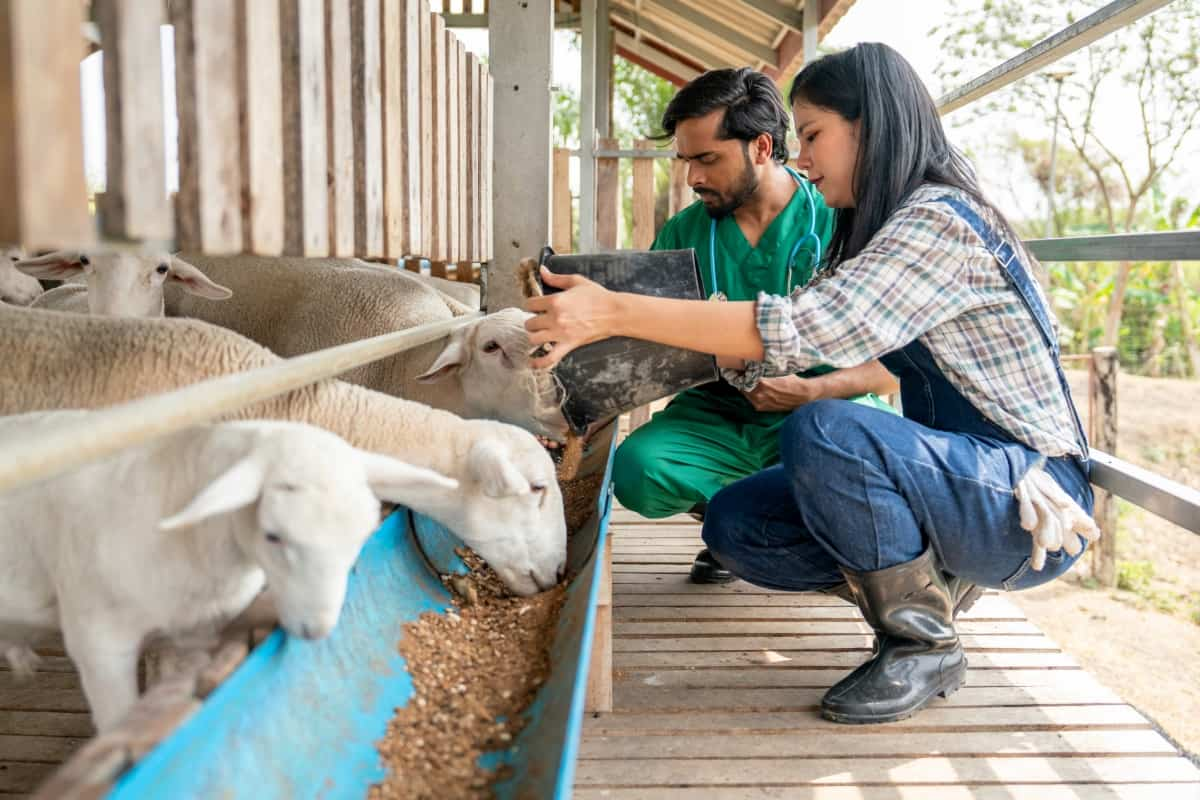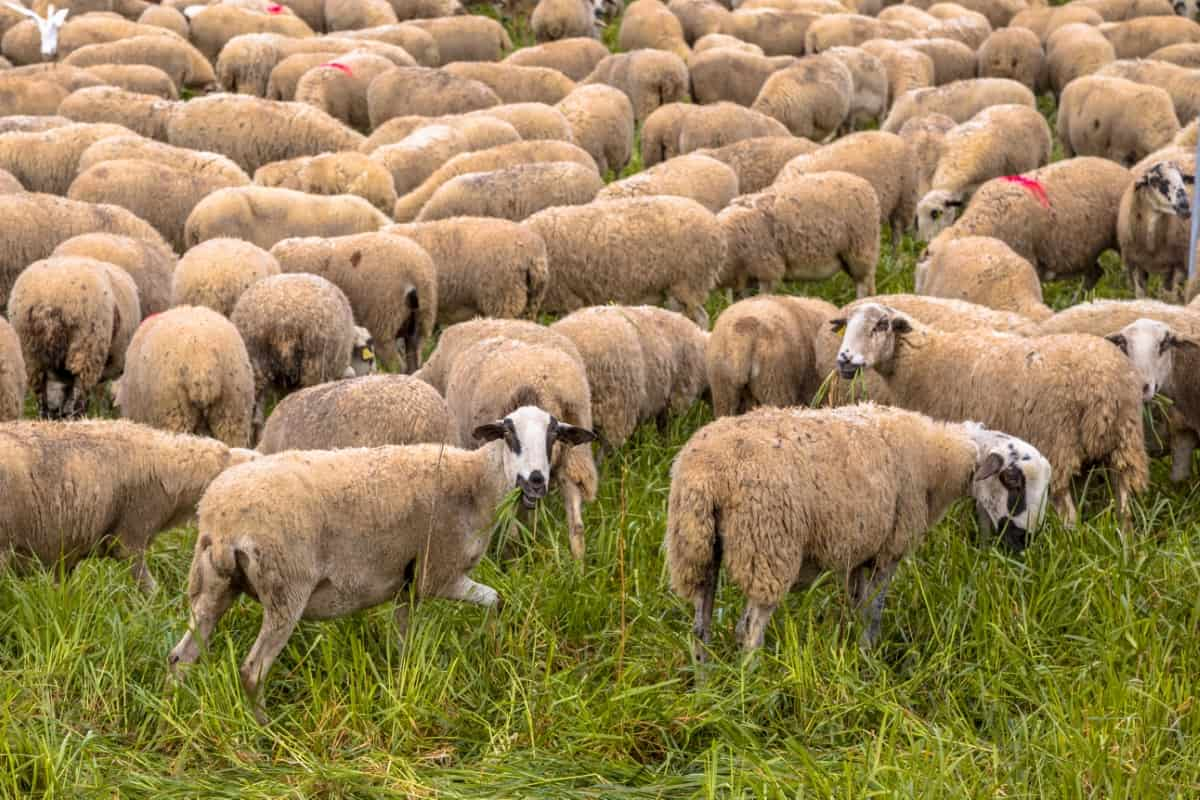Welcome to the world of sheep fattening, where science meets agriculture. Explore the intricacies of methods, the perfect feed formula, and the economic considerations involved. In this journey, we unveil the secrets behind efficiently fattening sheep, blending simplicity with the precision of scientific expertise.

Sheep Fattening Process
Introduction to Sheep Fattening
Sheep fattening is a process of intensive feeding of sheep to increase their body weight and fat deposition quickly. Sheep fattening is done to meet the high demand for quality meat in the local and export markets. Sheep fattening can be done with different types of feed, such as roughage, concentrate, or a combination of both. Sheep fattening can also be done with different methods, such as stall feeding, semi-intensive feeding, or intensive feeding. The choice of feed and method depends on the availability of resources, the cost of production, and the market preference.
Housing Requirements for Sheeps During the Fattening Phase
Sheep need a comfortable and hygienic housing environment during the fattening phase. The housing should provide adequate space, ventilation, lighting, drainage, and protection from predators and harsh weather conditions. The housing should also be easy to clean and disinfect.
The recommended space allowance for sheep during the fattening phase is 1-1.5 square meters per animal. The housing should have a roof that can prevent direct sunlight and rain. The floor should be made of concrete or wooden slats to prevent dampness and accumulation of manure. The housing should also have feeders and waterers that can provide sufficient feed and water to the animals.
Various Feeding Methods Used in Sheep Fattening
There are three main feeding methods used in sheep fattening: stall feeding, semi-intensive feeding, and intensive feeding. Stall feeding is where sheep are confined in a pen or stall and fed only with concentrate. This method can achieve high growth rates and feed conversion ratios (FCR), but it is costly and requires high-quality feed.
Semi-intensive feeding is where sheep are allowed to graze on pasture during the day and fed with concentrated feed in the evening. This method can reduce the feed cost and improve the animals’ health and welfare, but it also requires adequate pasture land and management. In intensive feeding, sheep are kept in a feedlot and fed with a mixture of roughage and concentrate feed. This method balances the animals’ cost and performance, but it also requires careful formulation and mixing of the feed.
Feed Formulation in Sheep Fattening (Different Components)
Feed formulation is the process of determining the optimal proportions of different feed ingredients to meet the nutritional requirements of sheep during the fattening phase. Feed formulation can be done using mathematical equations or software programs that calculate the nutrient content, digestibility, cost, and availability of different feed ingredients. The main components of sheep fattening feed are energy, protein, minerals, vitamins, and water.
Energy is the most important component that determines sheep’s growth rate and fat deposition. Energy sources include cereals, grains, molasses, oilseeds, etc. Protein is the second most important component that determines the muscle development and quality of the meat of sheep. Protein sources include oilseed cakes, legumes, fish meal, meat meal, etc. Minerals are for maintaining the health and metabolism of sheep.
In case you missed it: Sheep Farming Vs Goat Farming: Pros, Cons, and Which is More Profitable?

Minerals include calcium, phosphorus, sodium, potassium, iron, zinc, etc. Vitamins are also important for maintaining the health and immunity of sheep. Vitamins include vitamin A, D, E, K, B complex, etc. Water is vital for maintaining the hydration and digestion of sheep. Water should be always clean fresh and available.
Various Feed Ingredients Used in Sheep Fattening Diets
The selection of feed ingredients in sheep fattening diets is influenced by availability, cost, quality, palatability, digestibility, and compatibility with other ingredients. Common feed ingredients include maize, wheat, barley, sorghum, soybean meal, cottonseed meal, groundnut cake, lucerne hay, and rice straw.
Maize is a high-energy feed ingredient that provides starch and glucose to sheep, improving the feed’s palatability and texture. Wheat is another high-energy feed ingredient that provides starch and glucose, improving the protein content and quality of the feed. Barley is a moderate-energy feed ingredient that provides fiber and starch, improving the digestibility and fermentation of the feed.
Sorghum is a low-energy feed ingredient that provides fiber and tannins to sheep, improving their resistance to parasites and diseases. Soybean meal is a high-protein feed ingredient that provides essential amino acids, nitrogen balance, growth performance, and energy content. Cottonseed meal is a moderate-protein feed ingredient that provides amino acids and improves the feed’s energy content and palatability.
Groundnut cake is a low-protein feed ingredient that provides essential fatty acids and improves the quality of sheep’s skin and wool. Lucerne hay is a high-quality roughage feed ingredient that provides fiber, protein, minerals, vitamins, and rumen function. Rice straw is a low-quality roughage feed ingredient that provides bulk and filler to sheep, reducing the risk of acidosis and bloat.
Feed Conversion Ratio (FCR) and Its Significance in Sheep Fattening
Feed conversion ratio (FCR) measures the efficiency of converting feed into body weight gain. FCR is calculated by dividing the feed consumed by the weight gained. For example, if a sheep consumes 10 kg of feed and gains 2 kg of weight, the FCR is 10/2 = 5. The lower the FCR, the more efficiently the animal converts feed into weight gain.
The significance of FCR in sheep fattening is that it determines the profitability and sustainability of the fattening operation. A low FCR means that less feed is required to produce more weight gain, which reduces the cost of production and increases income. A high FCR means that more feed is required to produce less weight gain, which increases the cost of production and reduces the income. Therefore, FCR is an important indicator of the performance and profitability of sheep fattening.
Water Management in Sheep Fattening
Water management is an important aspect of sheep fattening, as water affects the feed intake, digestion, metabolism, health, and welfare of sheep. Water management involves providing adequate water quantity and quality to sheep during the fattening phase. The quantity of water sheep require depends on several factors, such as body weight, feed type, ambient temperature, humidity, activity level, etc. Generally, sheep require about 10% of their body weight in water daily.
In case you missed it: Sheep Breeding Calendar and Sheep Gestation Stages

For example, a 25 kg sheep requires about 2.5 liters of water daily. The quality of water required by sheep depends on several factors, such as pH, salinity, hardness, turbidity, contamination, etc. As a general rule, water should be clean, fresh, and free from harmful substances that can affect the health and performance of sheep. Water should be provided in clear and accessible containers that can prevent spillage and wastage.
Health Management in Sheep Fattening
Health management is crucial for sheep fattening, impacting growth, carcass quality, mortality rate, and marketability. It involves preventing and controlling diseases and parasites during the fattening phase. Vaccination protects sheep from infectious diseases, while deworming protects them from internal parasites.
External parasite control uses appropriate acaricides or insecticides to protect them from external parasites. Sanitation reduces infection and disease transmission risk by keeping the housing area clean, removing manure and waste, disinfecting equipment, and separating sick animals from healthy ones. Treatment restores the health and performance of sick or injured sheep by diagnosing the cause, administering appropriate drugs, and monitoring the recovery process closely.
Growth Monitoring During the Fattening Phase
Growth monitoring is a crucial aspect of sheep fattening, as growth reflects the effectiveness and efficiency of the fattening operation. Growth monitoring involves measuring and recording sheep’s body weight and body condition score (BCS) at regular intervals during the fattening phase. Body weight is a measure of the total mass of an animal. Body weight can be measured.
Cost Aspects of Sheep Fattening
Sheep fattening has lower investment costs, faster economic returns, and lower risks than fattening larger ruminants. The cost aspects of sheep fattening depend on various factors, such as the breed, feed, health, and market price. For example, a sheep fattening project report in India estimated the total expenditure for raising 50 native sheep for six months to be Rs. 5,52,800 with an average net profit of Rs. 1,47,200.
In case you missed it: Ultimate Guide to Small Sheep Barn: Design, Layout, Plans, Cost, and Ideas

Another study in Nigeria analyzed the cost and return of sheep fattening in the Gombi Local Government Area and found that the average total cost per sheep was N5,500.00. In contrast, the average total revenue per sheep was N 7,500.00, resulting in a gross margin of N 2,000.00 per sheep.
Conclusion
Mastering the sheep-fattening process requires a harmonious fusion of scientific methodology and economic considerations. Farmers can ensure a prosperous and efficient sheep-fattening venture by understanding optimal methods, feed formulas, and cost implications.
- Feed Your Flock for Less: Top 10 Tips to Save on Chicken Feed
- Ultimate Guide to Ossabaw Island Hog: Breeding, Raising, Diet, and Care
- Hatching Answers: The Top 10 Reasons Your Chickens Aren’t Laying Eggs
- Eggs and Economics: Breaking Down the Cost of Raising Backyard Chickens
- Defend Your Greens: Proven Methods to Keep Iguanas Out of Your Garden
- Ultimate Guide to Cinnamon Queen Chicken: A Comprehensive Guide for Beginners
- Ultimate Guide to California Tan Chicken: Breeding, Raising, Diet, Egg-Production and Care
- Ultimate Guide to Marsh Daisy Chicken: Breeding, Raising, Diet, and Care
- 10 Types of Chicken Farming Businesses You Can Start for Profits